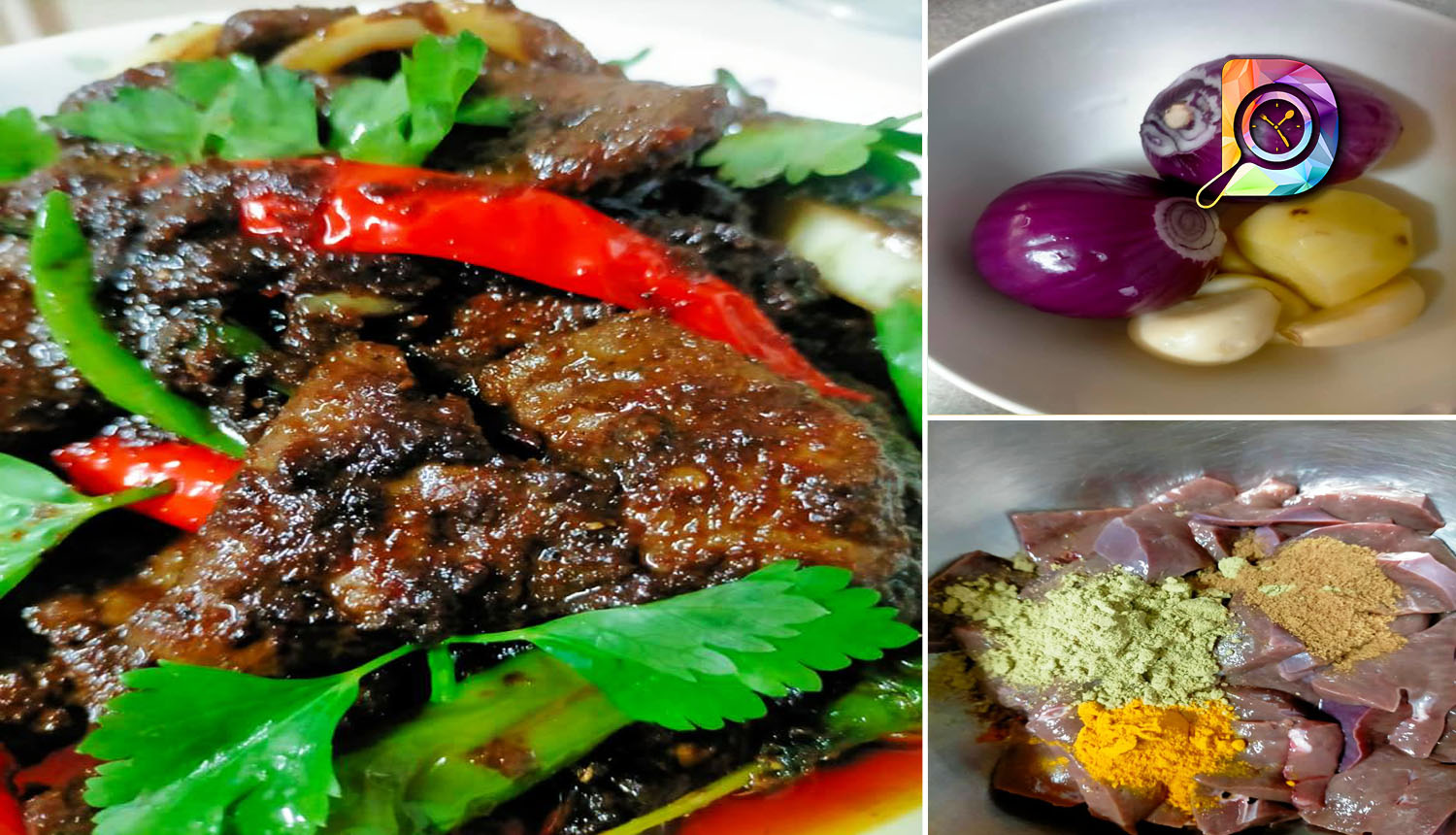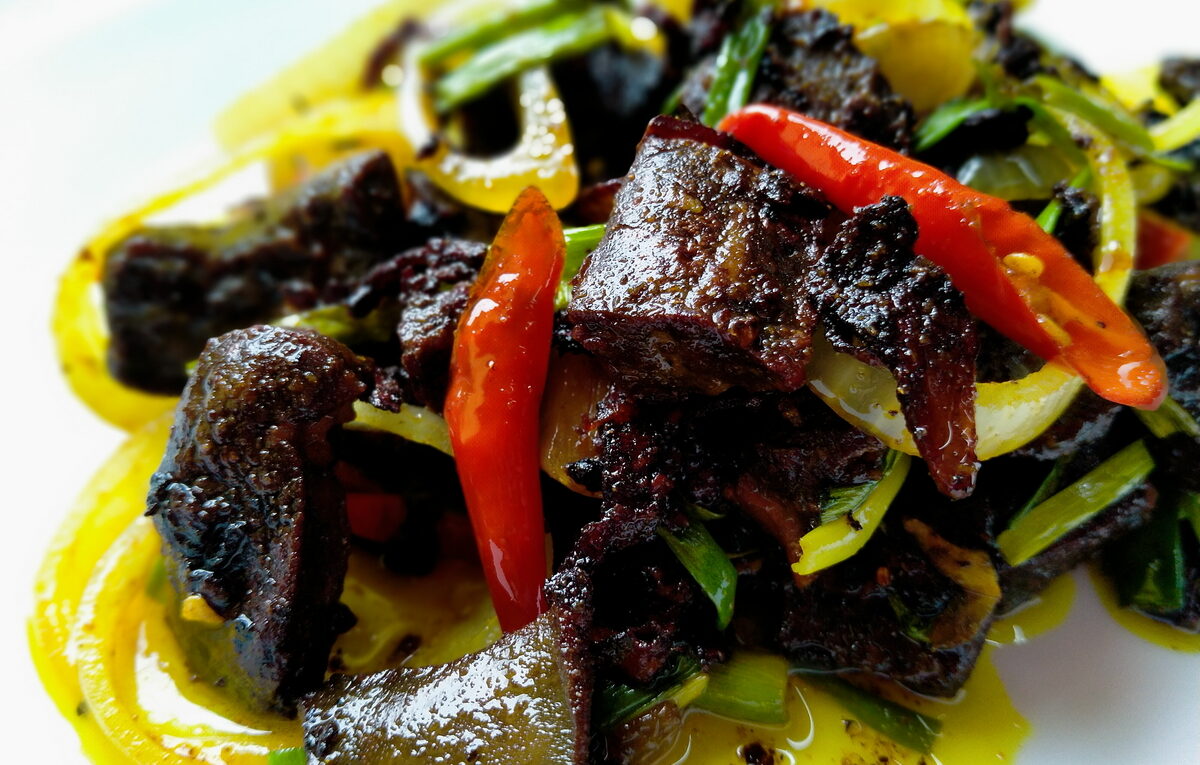Indonesian cuisine boasts a rich culinary tapestry, and resepi hati lembu, a delectable beef liver dish, takes center stage. Its popularity and cultural significance have made it a beloved dish throughout the archipelago, inviting us on a journey to explore its flavors and traditions.
From the bustling streets of Jakarta to the serene landscapes of Bali, resepi hati lembu has woven its way into the hearts and palates of Indonesians. Its versatility allows for regional variations and personal adaptations, making it a dish that caters to diverse tastes and dietary preferences.
Introduction

In the culinary landscape of Indonesia, “resepi hati lembu” holds a cherished place, referring to delectable dishes crafted from beef liver. Beef liver, esteemed for its nutritional value and distinctive flavor, has long been a beloved ingredient in Indonesian cuisine, inspiring a diverse array of traditional and contemporary dishes.
Popularity and Cultural Relevance
The popularity of beef liver dishes in Indonesia is deeply rooted in cultural traditions and culinary preferences. Beef liver is regarded as a delicacy, often reserved for special occasions and festive gatherings. Its unique taste and texture have captivated Indonesian palates for generations, making it a staple in many regional cuisines.
In Indonesian culinary culture, beef liver is frequently incorporated into soups, stews, and stir-fries. It is also commonly grilled or pan-fried, accompanied by flavorful sauces and aromatic spices. The versatility of beef liver allows it to be transformed into a wide range of culinary creations, each showcasing the ingredient’s inherent qualities.
Ingredients and Preparation

In this section, we will delve into the essential ingredients and the step-by-step process involved in preparing “resepi hati lembu,” ensuring a delectable culinary experience.
Ingredients
To create this savory dish, you will require the following ingredients:
- Fresh beef liver, thinly sliced
- Onion, finely chopped
- Garlic, minced
- Ginger, grated
- Cumin seeds
- Coriander seeds
- Red chili powder
- Turmeric powder
- Vegetable oil
- Salt to taste
Preparation
Now, let’s embark on the preparation process:
- In a bowl, combine the sliced beef liver with the chopped onion, minced garlic, grated ginger, cumin seeds, coriander seeds, red chili powder, turmeric powder, and salt. Mix well to ensure even distribution of flavors.
- Heat the vegetable oil in a skillet over medium heat.
- Once the oil is hot, add the marinated beef liver and cook for 5-7 minutes, or until cooked through but still slightly tender.
- Serve hot with your desired accompaniments, such as rice, chapati, or salad.
Variations and Adaptations
The “resepi hati lembu” has many regional variations throughout Indonesia. Some popular variations include:
- Hati Lembu Balado (Sumatra): This variation is cooked in a spicy tomato-based sauce.
- Hati Lembu Goreng Bawang (Java): This variation is stir-fried with onions and other spices.
- Hati Lembu Rica-Rica (Sulawesi): This variation is cooked in a spicy coconut milk sauce.
The dish can also be adapted to suit personal preferences and dietary restrictions. For example:
- For a spicier dish, add more chili peppers to the recipe.
- For a sweeter dish, add more brown sugar or honey to the recipe.
- For a gluten-free dish, use gluten-free soy sauce or tamari.
- For a low-carb dish, reduce the amount of rice or noodles served with the dish.
Culinary Significance: Resepi Hati Lembu
Beef liver is an incredibly nutritious organ meat that offers a wealth of essential nutrients. It is an excellent source of protein, iron, vitamin A, vitamin B12, and folate. Consuming beef liver as part of a balanced diet can contribute to overall health and well-being.
In Indonesian society, “resepi hati lembu” holds cultural significance as a traditional dish passed down through generations. It is often prepared during special occasions and gatherings, symbolizing hospitality and community.
Nutritional Value
- Protein:Beef liver is a rich source of high-quality protein, essential for building and repairing tissues, and supporting muscle growth.
- Iron:Beef liver is an excellent source of heme iron, which is more easily absorbed by the body than non-heme iron found in plant-based foods.
- Vitamin A:Beef liver is an abundant source of vitamin A, which plays a crucial role in vision, immune function, and cell growth.
- Vitamin B12:Beef liver is one of the best dietary sources of vitamin B12, essential for red blood cell formation, nerve function, and DNA synthesis.
- Folate:Beef liver is a good source of folate, which is important for cell growth, DNA synthesis, and red blood cell production.
Presentation and Serving
To enhance the visual appeal and dining experience of “resepi hati lembu,” consider the following presentation and serving suggestions:
Traditionally, “resepi hati lembu” is served as a main course accompanied by a side of mashed potatoes, roasted vegetables, or a simple green salad. For a more contemporary presentation, you can arrange the liver slices on a bed of sautéed onions or grilled pineapple, drizzled with a tangy sauce or a balsamic reduction.
Garnishes and Accompaniments
Incorporate fresh herbs like parsley, cilantro, or chives to add a vibrant touch of color and flavor to the dish. Sliced almonds, toasted sesame seeds, or crumbled bacon bits can provide a contrasting texture and enhance the overall presentation.
Traditional accompaniments for “resepi hati lembu” include mashed potatoes, which offer a creamy and comforting base for the flavorful liver. Roasted vegetables, such as carrots, parsnips, or bell peppers, add a colorful and nutritious element to the plate. A simple green salad with a light vinaigrette dressing provides a refreshing contrast to the richness of the liver.
Health Considerations
Consuming beef liver can provide numerous nutritional benefits, but it’s important to be aware of potential health risks associated with its consumption. The following guidelines will help ensure safe preparation and consumption of this dish.
One potential risk associated with beef liver is its high cholesterol content. A 3-ounce serving contains approximately 300 mg of cholesterol, which is about 100 mg more than the recommended daily intake for adults. Excessive cholesterol intake can contribute to the development of heart disease and other cardiovascular problems.
Safe Preparation and Consumption
- Choose lean liver:Opt for liver that has minimal visible fat to reduce cholesterol intake.
- Limit portion size:Consume beef liver in moderation, limiting portions to 3-4 ounces per serving.
- Cook thoroughly:Cooking liver to an internal temperature of 160°F (71°C) will kill any harmful bacteria and reduce the risk of foodborne illness.
- Avoid raw consumption:Consuming raw or undercooked liver can increase the risk of contracting parasites and bacterial infections.
- Consider individual health conditions:Individuals with high cholesterol or other cardiovascular risk factors should consult with a healthcare professional before consuming beef liver.
Recipe Compilation
To compile a comprehensive collection of “resepi hati lembu” recipes, it is essential to gather recipes from diverse sources, ensuring a wide range of variations, adaptations, and cooking techniques. This compilation should include both traditional and modern recipes, catering to different preferences and dietary needs.
When selecting recipes, consider their authenticity, popularity, and ease of preparation. Look for recipes that provide clear instructions, precise measurements, and helpful tips to ensure successful execution. It is also beneficial to include recipes that offer variations, such as different marinades, cooking methods, or serving suggestions, to cater to diverse tastes and preferences.
Recipe Organization
Once the recipes have been gathered, organize them into categories based on their main ingredients, cooking methods, or regional origins. This will make it easier for users to find the recipes they are looking for and explore different options within each category.
Consider creating subcategories within each category to further refine the organization. For example, the “Traditional Recipes” category could be divided into subcategories such as “Spiced Liver Curry,” “Fried Liver with Onions,” and “Liver Satay.” This level of organization will enhance the user experience and make it easier to navigate the recipe collection.
Recipe Adaptations and Tips, Resepi hati lembu
In addition to compiling recipes, it is valuable to provide adaptations and tips to help users customize the recipes to their preferences and dietary restrictions.
Include tips on how to substitute ingredients, adjust spice levels, and modify cooking methods to accommodate different tastes and dietary needs. For example, suggest using a different type of liver, such as chicken or pork liver, or provide instructions on how to make the recipe gluten-free or vegan.
Conclusion
In conclusion, “resepi hati lembu” holds a significant place in Indonesian cuisine and culture. Its distinct flavor and versatility have made it a beloved dish, enjoyed in various forms and settings. The recipe’s simplicity and affordability contribute to its widespread popularity, making it accessible to people from all walks of life.
The discussions throughout this article have highlighted the importance of preserving and celebrating the culinary heritage of Indonesia. “Resepi hati lembu” serves as a testament to the country’s rich culinary traditions and the creativity of its people. It is a dish that brings families and communities together, fostering a sense of shared identity and cultural pride.
Ultimate Conclusion
As we conclude our exploration of resepi hati lembu, its significance in Indonesian cuisine and culture remains undeniable. Its nutritional value, culinary versatility, and cultural significance have cemented its place as a beloved dish that continues to tantalize taste buds and evoke a sense of culinary heritage.
Whether enjoyed as a traditional delicacy or reimagined with modern twists, resepi hati lembu stands as a testament to the rich culinary traditions of Indonesia, inviting us to savor its flavors and appreciate its enduring legacy.
Answers to Common Questions
What is the significance of resepi hati lembu in Indonesian cuisine?
Resepi hati lembu holds a special place in Indonesian cuisine as a beloved dish that reflects the country’s rich culinary traditions and cultural heritage.
How does resepi hati lembu vary regionally in Indonesia?
Resepi hati lembu exhibits regional variations across Indonesia, with each region adding its unique touch to the dish. These variations may include differences in spices, cooking methods, and accompanying ingredients.
What are some common health considerations associated with consuming beef liver?
While beef liver is a nutritious food, it is important to be aware of potential health considerations, such as its high cholesterol content. Moderate consumption and proper preparation are key to enjoying the benefits of resepi hati lembu.